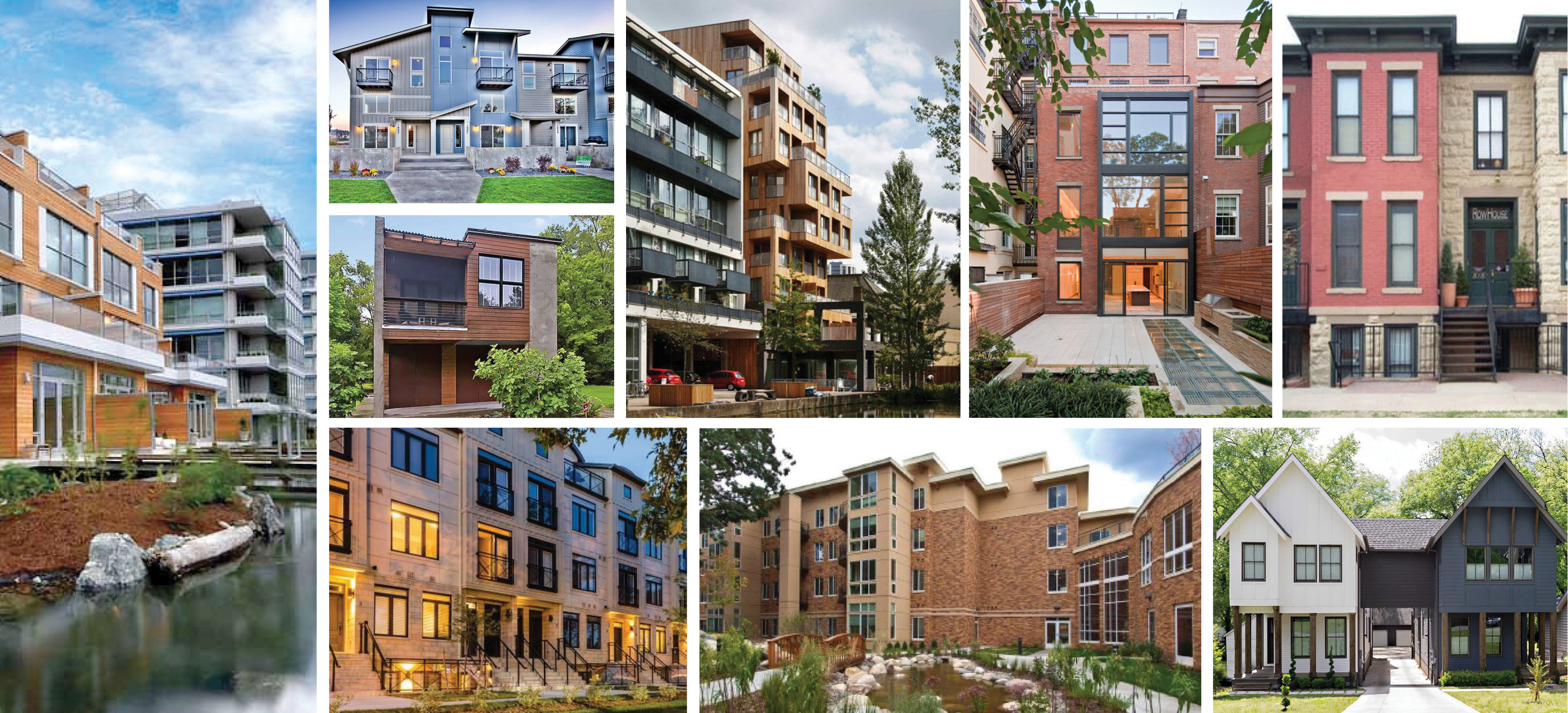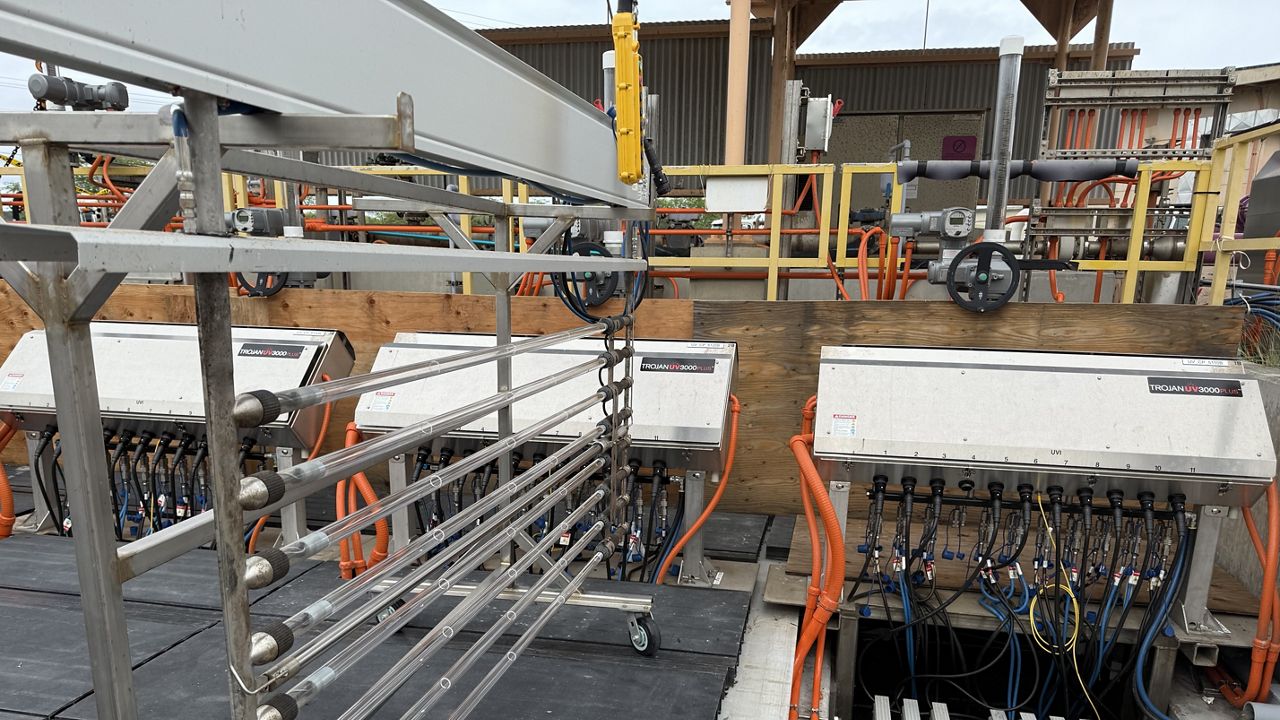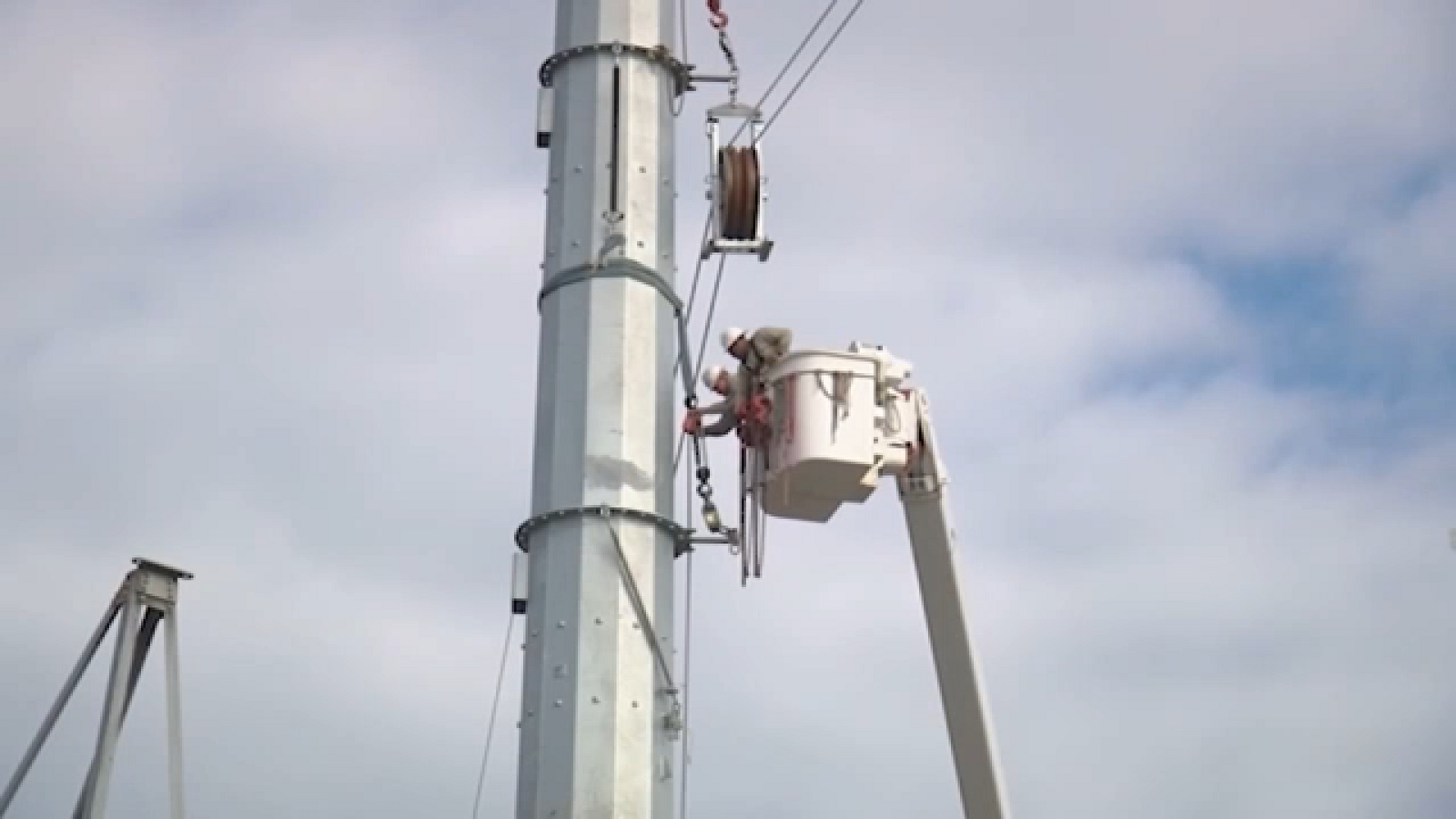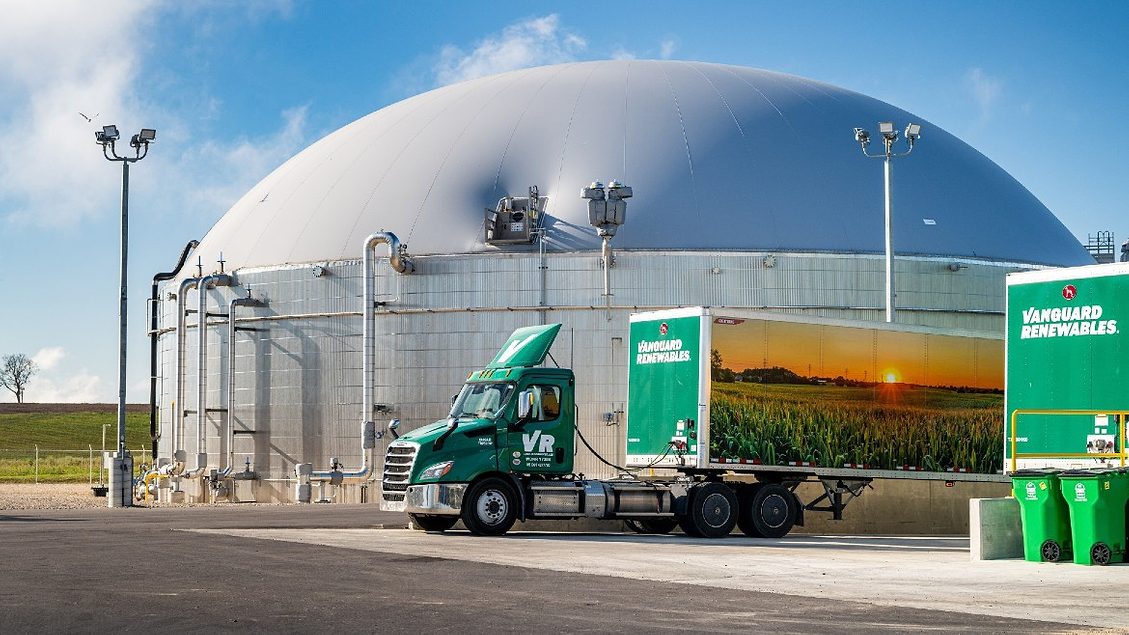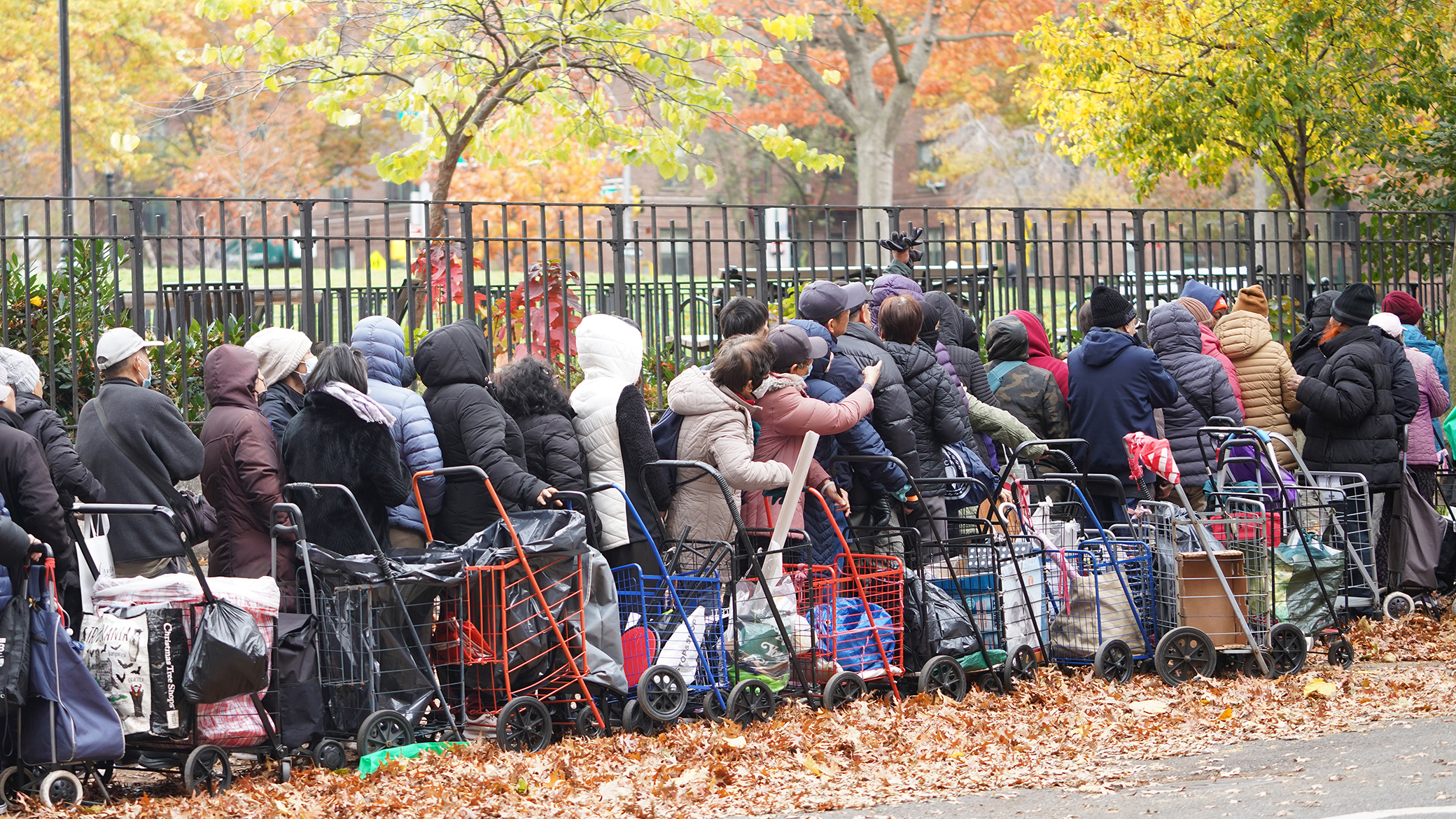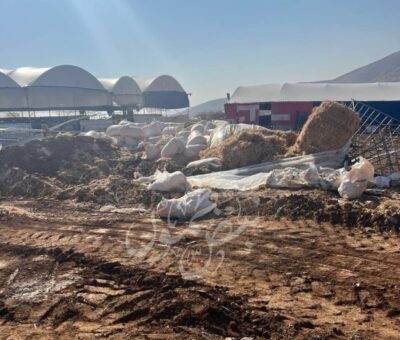Standardization of Practices
This article highlights the need for new community scenarios that focus on common outcome metrics for societal well-being and ecosystem resilience, in contrast to current approaches that primarily address drivers of change. The proposed approach aims to improve risk assessment and response strategies across various sectors and scales by emphasizing critical outcomes and systematic scenario generation methods.

Scenarios are visions of how the world might unfold. They can consist of stories, numerical projections, or both. Typically scenarios describe trends in drivers of change—factors like population and economic growth, how fast technological progress occurs, and changes to the climate system. Historically, small sets of common scenarios have been widely used by the global change research community. Researchers use the scenarios as inputs to project the consequences of the drivers, for example, for agricultural production, water availability, or the costs of decarbonization. We propose that new scenarios are needed that include outcomes (consequences) not just for physical or managed systems, but also for human well-being and resilience, including health, poverty, and household food, water, and energy security. Further, the scenarios should not only include well-being outcomes, but be organized around them. That is, scenarios should be designed not necessarily to span a wide range of drivers, but rather to span a wide range of well-being and resilience outcomes. Designing scenarios around the ultimate outcomes of interest will improve the assessment of risks and responses related to well-being and resilience. New quantitative methods for generating and identifying scenarios can facilitate this process. Also, making them more easily accomplished or standardized can streamline their application.
Abstract
Shared community scenarios of societal and environmental system changes have underpinned a broad range of research and assessment studies over the past several decades. These scenarios have largely aimed to address specific questions within broad issue areas like climate change or biodiversity and generally provided information on the drivers of change. The consequences of those drivers, such as impacts on society and policy responses, have tended to be left to the research community to investigate, using scenarios of drivers as inputs to their studies, producing projections of a disparate set of relevant output metrics. While this approach has had many benefits, it has fallen short of producing a robust, comparable literature describing outcomes across studies in common metrics. We argue that new scenarios are needed that extend current approaches to be organized around common outcome metrics for the well-being and resilience of society and ecosystems. We propose an approach that would focus on agreed upon outcomes for well-being and resilience as well as critical drivers of change, cut across issues and scales in multiple sectors, and draw on new systematic methods of scenario generation and discovery to highlight scenarios that are most critical in understanding societal risks and responding to them. Research derived from this outcome-based scenario development approach would facilitate improved assessment of risks of and responses to a range of stressors and the multi-sector interactions they generate.
Key Points
-
Community scenarios facilitate research and assessment but have fallen short of producing a literature with comparable outcomes
-
New scenarios are needed that are organized around outcomes for human well-being and resilience
-
We propose an outcome-based scenario development approach that would cut across issues, scales, and sectors
Plain Language Summary
Scenarios are visions of how the world might unfold. They can consist of stories, numerical projections, or both. Typically scenarios describe trends in drivers of change—factors like population and economic growth, how fast technological progress occurs, and changes to the climate system. Historically, small sets of common scenarios have been widely used by the global change research community. Researchers use the scenarios as inputs to project the consequences of the drivers, for example, for agricultural production, water availability, or the costs of decarbonization. We propose that new scenarios are needed that include outcomes (consequences) not just for physical or managed systems, but also for human well-being and resilience, including health, poverty, and household food, water, and energy security. Further, the scenarios should not only include well-being outcomes, but be organized around them. That is, scenarios should be designed not necessarily to span a wide range of drivers, but rather to span a wide range of well-being and resilience outcomes. Designing scenarios around the ultimate outcomes of interest will improve the assessment of risks and responses related to well-being and resilience. New quantitative methods for generating and identifying scenarios can facilitate this process.
1 Introduction
Scenarios developed for wide use in the climate and global change research community have played a prominent role for decades. Community scenarios reduce the duplication of effort that would occur if all research groups were left to develop their own projections of societal and environmental conditions on which to base their analyses. They also encourage the development of a broad scientific literature that shares common assumptions about future underlying trends, making it possible to synthesize results from a large number of studies to draw conclusions about possible future conditions.
However, research needs have evolved over time, and scenario frameworks need to evolve with them. Most current frameworks, including the SSP-RCP scenarios (O’Neill et al., 2020; van Vuuren et al., 2014) and the SRES framework (Nakicenovic et al., 2000), focus on providing a common set of qualitative and quantitative inputs to models and other analyses. The broader research community then uses these inputs to investigate implications for various outcomes—that is, the model outputs or results that are of interest in a given study. These outcomes may be related to climate change impacts, societal response options such as energy or land policies, or adaptation.
While this approach has been successful in facilitating a wide range of studies, it leaves several gaps. In particular, most studies do not project future outcomes for human well-being, but rather stop short at outcomes for biophysical systems (e.g., effects on the climate system, land cover, or water supply), managed systems (effects on energy, agriculture, and water systems), and economic systems (effects on GDP, prices, or output levels). While researchers, such as those within the MultiSector Dynamics (MSD) Community of Practice (Reed et al., 2022), have been advancing the study of such systems and their complex interactions, less work has built on that foundation to extend our understanding to associated outcomes for societal well-being. Well-being is a broad concept that we discuss in more detail in the next section, but briefly it refers to the conditions that allow individuals to live a meaningful life. These include conditions that are amenable to modeling, such as health; education; energy, water, and food security; and living standards. Many more studies project outcomes for global average temperature, national-level GDP, or crop yields (all measures of systems) than for numbers of cases of a particular disease, the burden placed on households by energy expenditures, or the numbers of people in poverty (all measures of well-being). This imbalance is particularly noteworthy given the fact that well-being outcomes are arguably what ultimately motivates research into many systems (Figure 1).
Well-being outcomes are ultimately what motivate the study of human-earth system interactions, including MultiSector Dynamics. The outer ring represents factors that may act as stressors or influences on the inner ring, representing managed systems that each contain interconnected elements while simultaneously interacting with other systems. Both rings affect outcomes for well-being. The circle to the left contains a selected set of dimensions of well-being meant to be illustrative. Figure adapted from Clarke et al. (2018).

In addition, as noted above, current scenario frameworks provide common inputs to other studies, including trends in population, economic growth, and rates of technological change. Researchers use them to drive projections of whatever type of outcome they may be interested in. Thus, inputs to models are coordinated (through scenarios), while outcomes for societal conditions are not. As a result, the production of outcomes of interest in common metrics across studies has been limited. By “metrics” we mean measures of the extent or degree of a broader category of outcomes, such as under-nourishment as a metric of food security.
Existing scenario frameworks have also generally focused on particular issues, such as climate change (SSPs, SRES, NGFS (Network for Greening of the Financial System)) or biodiversity and ecosystem services (MEA (Millennium Ecosystem Assessment), IPBES (Intergovernmental Science-Policy Platform on Biodiversity and Ecosystem Services)), rather than explicitly accommodating multiple issues of interest (climate, biodiversity, air quality, water quality, sustainable development, national security, etc.) and multiple stressors. In addition, they have been primarily developed at the national to global scale, with more ad hoc extensions to the sub-national scale, where adaptation and decision options come to the fore. Finally, these frameworks have also been developed with a limited range of methods, mainly traditional storyline and simulation approaches, while more systematic and quantitative approaches (including exploratory modeling and scenario discovery) have played an ancillary role.
There are exceptions to these general tendencies. Individual studies may focus on well-being outcomes such as food security (van Meijl et al., 2020) or poverty (Crespo Cuaresma et al., 2018), or evaluate a range of outcomes (Creutzig et al., 2022). Model comparison exercises may even coordinate across multiple models to address such topics (Hasegawa et al., 2018). But these analyses employ scenario frameworks that were designed for other purposes and that generally aim to cover a wide range of drivers, rather than being designed to cover a wide range of well-being outcomes. Some past scenario efforts, such as those for the Millennium Ecosystem Assessment (MEA, 2005), incorporated outcomes into their design, and recently the Sustainable Development Pathways (SDPs) have been developed to explore scenarios that attempt to achieve the sustainable development goals (SDGs) and the Paris Agreement goals jointly (Soergel, Kriegler, Weindl, et al., 2021), and therefore have a strong orientation toward well-being outcomes. However the SDPs focus on how the world might achieve specific goals rather than exploring future well-being outcomes more broadly. Outcome-driven community scenarios remain a gap in research.
As such, we propose the need for an outcome-based scenario development process that would address these gaps by being organized around outcomes for well-being, allowing for the analysis of multiple issues at multiple scales, and employing new systematic techniques for developing and exploring scenarios and characterizing their uncertainty. We use “scenario” in an integrated sense: a vision of how the future may unfold that accounts for both socio-economic and climate/environmental change, and in particular that includes not only drivers of those changes but also the outcomes for societal well-being and resilience.
The new scenario framework we envision would be designed from the outset to explore key well-being outcomes, such as water, food, and energy security from subnational to global scales. By taking a multisector, multiscale approach to scenario design, the framework would produce a greater diversity of well-being outcomes than existing scenario databases which were not designed for this purpose. Furthermore, the proposed framework would leverage large scenario ensembles and emergent data-driven scenario generation methods, like scenario discovery, to allow a thorough exploration of uncertainty, investigation of tradeoffs between metrics of well-being, and selection of scenarios most relevant for specific applications.
2 Vision
The scenario development process we envision would be organized around the goal of understanding future outcomes for societal well-being and resilience, and sensitivities of these outcomes to multiple possible stressors. Well-being is an inherently multidimensional concept that broadly refers to what constitutes a “good life” (Stiglitz et al., 2009). While it can include subjective elements, it can also include dimensions amenable to analysis in the multi-sector dynamics field including food, water, and energy security; health; living standards; and quality of the environment. Resilience typically refers to the ability to cope with and respond to a disturbance such as an event or a change in a trend. Thus, within this scenarios framework, the goal would be to understand how various factors may affect the well-being of society and how resilient society is; that is, when stressed by any biophysical (e.g., climate, air quality) or socioeconomic (e.g., technological change, policy change) factor, how much is well-being impacted and how difficult is it to recover? As discussed in the introduction, while some studies and scenarios may share these goals, the framework we propose is explicitly designed around these aims.
We believe that both well-being and resilience are important goals for the scenario framework to encompass. However, considering them both from the outset presents substantial challenges. They may have different determinants; the human and earth system dynamics that shape them may be different, and therefore require different types of model development; and the metrics used to measure them likely differ, with resilience, reflecting the capacity for a particular kind of dynamic behavior, being harder to capture. Indeed resilience has alternative definitions capturing different types of dynamics (Irwin et al., 2017), and so choices would need to be made even in its definition. We therefore propose to focus initially on well-being for the purpose of the proposed framework, with the anticipation of extending it to resilience at a later stage in the process.
Well-being itself has been defined in many ways that identify a large number of possible dimensions of the concept. Broadly speaking, these can be divided into “subjective” and “objective” dimensions (Voukelatou et al., 2021). Subjective well-being is a psychological concept that reflects an individual's judgment of their quality of life. It is often equated with happiness, although happiness can include not only the predominance of positive over negative feelings and high life satisfaction, but also feelings of living a life with meaning and purpose (Kashdan et al., 2008).
In contrast, objective well-being measures external factors that reflect conditions that can foster a good life. In the capabilities approach of Amartya Sen, dimensions of well-being are factors that can enhance the capabilities and freedoms of people to choose the life they value (Stiglitz et al., 2009). The choice of any particular set of dimensions of well-being is a value judgment. A range of dimensions of objective well-being have been proposed. For example, many of the SDGs and their associated targets can be seen as dimensions of objective well-being (Lamb & Steinberger, 2017), as they include material conditions (poverty), quality of life factors (health; education; climate; food, water, and energy security), and social factors (gender equality, reduced inequality, peace, justice). The OECD, in its own set of dimensions of well-being, also identifies material conditions (e.g., income, wealth, and housing), quality of life factors (e.g., health, knowledge and skills, environmental quality, and safety), and social factors (e.g., social connections, civic engagement) (OECD, 2020).
We focus here on a subset of objective aspects of well-being that are amenable to quantitative analysis and most directly relevant to human-earth system interactions. Table 1 shows a number of possible outcomes characterizing different dimensions of well-being that could potentially be quantified in models.
| Well-being outcomes | ||
|---|---|---|
| Energy security | Living standards | Education |
| Energy burden | Income | Mean years of schooling |
| Energy poverty | Consumption | % completed primary, secondary, tertiary |
| Access | Economic welfare | Education quality |
| Reliability | Wealth | Social conditions |
| Unmet demand | Poverty | Conflict |
| Water security | Income inequality | Shelter |
| Exposure to water stress | Livelihoods | Migration |
| Flood damages | Employment | Environmental conditions |
| Flood mortality | Health | Biodiversity |
| Drought damages | Mortality | Ecosystem integrity, functioning |
| Access to clean water | Morbidity | Ecosystem services |
| Food security | Health care costs | |
| Food burden | ||
| Malnutrition | ||
| Micronutrient deficiency | ||
- Note. For most outcomes, multiple metrics could be used to quantify them. For example, income inequality could be measured by the Gini coefficient, the Palma ratio, the share of income going to the top 1% of households, or other measures.
Scenario development would involve a combination of exploratory modeling and scenario discovery, representing a new systematic and quantitative way of generating and conceptualizing scenarios. Existing scenarios were generally designed to span a wide range of a set of input drivers based on narratives of different potential futures, which may or may not span an interesting range of outcomes for well-being metrics. In contrast, our proposed process uses exploratory modeling specifically designed to span a relevant range of those outcomes. Exploratory modeling is an approach that uses computational experiments to systematically explore the implications of varying assumptions and hypotheses to assist in reasoning about systems where there is significant uncertainty (Bankes, 1993; Kwakkel & Pruyt, 2013). It involves running large ensembles of model simulations under different assumptions, which can then be analyzed using scenario discovery techniques to provide valuable insights. Scenario discovery involves screening databases of model simulations using machine learning classification algorithms to identify outcomes of interest and their conditions for occurring (Bryant & Lempert, 2010; Groves & Lempert, 2007; Lempert, 2003). Combining exploratory modeling and scenario discovery enables the identification of relevant scenarios by working backwards from the outcomes of interest to the conditions that would produce those outcomes. This enables a shift in focus from “what if” scenarios that attempt to predict outcomes for given sets of assumptions to scenarios specifically designed to explore the plausible ranges of outcomes for well-being and the conditions that lead to certain desired or undesired outcomes.
This framework would need to be flexible to facilitate multi-scale analysis. We propose to focus initially on national to global scales, but including regionally-differentiated US scenarios. Our ambition is that these scenarios would support the extension of this framework to regionally-differentiated scenarios in other countries (e.g., China, India), and to even finer, sub-national scales within the US (e.g., to individual cities, states, or bioregions). Timescales would extend at least through the end of the century. These spatial and temporal scales allow the incorporation of the influence of global conditions and international teleconnections on national and sub-national patterns of change, the exploration of long-term consequences of short-term changes, and vice-versa.
We envision this framework as complementary to, not a replacement for, existing frameworks such as the SSPs and these scenarios could be mapped to, and incorporated into, the SSP framework (and vice-versa). The SSPs themselves are alternative socio-economic development pathways without climate change impacts or policy that describe worlds with different levels of challenges to adaptation and mitigation (Kriegler et al., 2012; O’Neill et al., 2014). They include qualitative descriptions of some well-being outcomes (O’Neill et al., 2017), and extensions to the scenarios have quantified some measures of well-being such as poverty (Soergel, Kriegler, Bodirsky, et al., 2021) and inequality (Rao et al., 2018). In our framework, the scenarios would be developed to span a wide range of well-being outcomes, rather than focusing on challenges to adaptation and mitigation. Well-being quantification would be part of the design of the scenarios rather than being added afterward. Drivers for the two scenario sets would likely differ.
Because this framework is organized around outcomes for well-being, it would be suitable for analysis of multiple issues with different drivers, including climate change but also including air quality, demographic change, potentially disruptive technological changes, trade regimes, and security issues. It would facilitate addressing questions such as: what factors would promote, or put at risk, human well-being? What are synergies and tradeoffs across different dimensions of well-being? What types of interventions could improve well-being?
The development of this framework would have a number of benefits for the research community, including improved analysis and modeling frameworks (especially for capturing various aspects of well-being), collaboration across the MSD and international communities, and stronger connections between the MSD community and scenario users, including at federal agencies.
3 Objectives and Process Overview
The overarching goal of the proposed scenarios framework is to provide scenarios that can help structure research and inform assessment of the role of various factors in promoting, or putting at risk, human well-being and societal resilience. We envision a scenarios framework (Figure 2) that will generate two main scenario products: (a) a large, searchable database of scenarios with various combinations of alternative driving forces and stressors, and their associated outcomes for well-being and resilience and (b) a small set of community scenarios selected from the database spanning a relevant range of outcomes. The scenario database would be available to the community for direct analysis and for individual research projects to select and use scenarios tailored to their specific needs. It would differ from existing databases by including outcomes for well-being and resilience. The small set of community scenarios would be identified with scenario discovery methods and proposed for common use across a wide range of MSD studies. Wide use of these community scenarios would facilitate the development of a larger body of literature characterizing the well-being and resilience of alternative futures.
Elements of the MSD Scenario Framework and Process. The lower panel represents key framework elements including the concept of well-being outcome-focused scenario design, a large scenario database, a small set of community scenarios, and research studies from the larger community. The research studies would include efforts that generate scenarios as part of their work that could then be added to the database, analyses of the scenario database itself, and studies based on the community scenarios. Scenario discovery, as described in the text, is a method for identifying scenarios of interest from a large number of candidate scenarios. The upper panel indicates key elements of the scenario process that would continuously interact with the framework.

Generating an initial large database of scenarios would involve conducting exploratory modeling (i.e., running large ensembles of model simulations) designed to span a wide range of outcomes for well-being by systematically varying underlying uncertain drivers and assumptions about societal choices (e.g., the level and design of policy, the availability of carbon dioxide removal technologies, characteristics of governance, social trends, the rate of population and economic growth, the cost of technologies, fossil resource availability, and other important assumptions in a model). Conducting exploratory modeling allows for the systematic exploration of a wide range of uncertainty and scenarios from which insights about the well-being outcomes of interest can be drawn. We foresee initial pilot projects using the Global Change Analysis Model and the MIT Integrated Global System Model, two global-to-regional coupled human-Earth systems models that are well established within the MSD research community.
Researchers would use exploratory modeling to generate ensembles of model runs to generate an initial scenario database, which would consist of the full set of modeled ensemble results and would be publicly available and searchable. The database would include scenarios that consist of the assumptions and the parameter values that generated them, plus all model outcomes, including metrics of well-being as well as intermediate outcomes. Individual research projects could use the database to identify and use scenarios tailored to their specific needs. The database would also be useful for direct analysis, for example, of the tradeoffs between outcomes for different dimensions of well-being or of the distribution of outcomes across different regions or socio-economic groups.
We imagine that with the engagement of more researchers, additional models, including those at finer sub-national scales, can be used to add scenarios to the database, and the scenario database would grow as researchers from the broader community add both individual scenarios and ensembles of their own. It will also be essential for models to evolve over time to be able to model more metrics of well-being. Since many models were not designed with such metrics in mind, they may lack adequate representation of the important dynamics contributing to certain outcomes. One important function of the early stages of the process will be to identify and highlight where we have the largest gaps in our ability to model well-being metrics and what model advancements are needed. As an example, most global models are unable to distinguish between different socio-economic groups, which would be needed to capture certain well-being metrics related to equity as well as to analyze how any given well-being outcome is distributed across groups. We imagine an iterative process in which the models and metrics advance over time, contributing new scenarios to the database, enabling new analyses, and potentially producing new sets of community scenarios.
The application of scenario discovery techniques to the scenario database can stimulate creative thinking about the conditions, dynamics and tradeoffs behind outcomes for well-being. For example, after identifying metrics of well-being of interest, scenario discovery can be used to search the scenario database to identify scenarios that have particularly high or low values for the outcome metrics and find the conditions/input drivers behind those outcomes, including alternative pathways that lead to the same outcomes. In addition, these techniques can be used to explore relationships between different model outcomes and identify individual scenarios of interest, including those defined by specific combinations of outcomes. This facilitates the exploration of tradeoffs, their drivers and potential options for resolving them. For example, there may be several different pathways that lead to the same outcomes for well-being metrics related to food and water security, but very different outcomes for energy security metrics, and scenario discovery can find where those tradeoffs exist and the conditions that enable better outcomes across multiple well-being metrics.
Producing small sets of scenarios for wide use by the community would involve: (a) applying scenario discovery techniques to identify scenarios of interest from the database (e.g., scenarios with certain combinations of outcomes for different dimensions of well-being) and the conditions that produced them; and (b) conducting a model intercomparison exercise using the small set of scenarios identified in (a) to produce the best quantification of each scenario, and characterization of uncertainties, for community use. This comparison would also produce new insights and identify key areas for further model development. The process would not necessarily be linear; for example, identifying community scenarios could inform new ideas for generating additional scenarios for the database. The drivers, assumptions, and results for the community scenarios would be publicly available, along with qualitative storylines that interpret in narrative form the set of assumptions underlying the quantitative outcomes. Unlike most existing frameworks, this storyline would be developed after the model runs, rather than before them.
It is also important to recognize that outcomes will vary over time and space. A strength of the framework is that applying scenario discovery to the scenario database enables the identification of individual scenarios that meet some criteria for human well-being at a given time and place. However, the fact that outcomes change across time and space makes selecting a small set of community scenarios challenging. Community engagement will be needed to think through the best ways to approach this step. Potential options include focusing on end-of-century outcomes for the world in order to select a small scenario set, or potentially developing multiple small scenario sets for different purposes.
For this approach to developing outcome-focused scenarios to be successful, the process must involve continuous interaction with other activities, namely community engagement, metric identification and selection, and model advancements (Figure 2). The MSD and related research communities, as well as scenario users and impacted communities, should be engaged to flesh out this plan and provide expertise and input to the different stages of scenario development. Researchers will need to be engaged to carry out modeling and other analyses within the framework, and to make the model advancements needed to expand the representation of metrics of well-being. We imagine this will be an iterative process that will evolve and expand over time to accommodate new and diverse perspectives and models. The development of metrics for well-being will be a key activity shaping the scenarios and needed model development. While initial consultation on specific metrics can start with the MSD and related research communities, it will be important to extend stakeholder engagement to include different impacted communities and social scientists to capture diverse values and perspectives on what constitutes well-being, for whom, and what metrics to explore. While metrics will initially be limited by model capabilities, we expect the process to generate ideas of metrics we ideally want to investigate but cannot currently produce, thereby spurring model advances to better reflect the dynamics needed for different outcome metrics. Similarly, we expect that analysis of the scenario database would generate insights that would influence wider research activities and motivate model advancements to better capture the intended outcomes of interest, and those advancements will in turn shape further scenario development. This is a very iterative process, one that could benefit from a working group and could be expanded over time to include new perspectives.
We believe this proposed scenarios framework would fill an important research gap and help drive and facilitate collaborative research on outcomes of well-being and (ultimately) resilience in a multi-sector context while also providing a useful resource to other researchers looking for individual scenarios that fit their needs. Priorities for work toward achieving this vision include (a) developing metrics for well-being and resilience, (b) expanding the ability of modeling frameworks to capture aspects of well-being and resilience, (c) carrying out more scenarios of well-being outcomes at a variety of scales, (d) exploring ways to enhance the usefulness of scenarios to studies at smaller geographic scales, and (e) developing infrastructure for capturing comparable results and scenarios in a user-friendly database.
Acknowledgments
This research was supported by the U.S. Department of Energy, Office of Science, as part of research in MultiSector Dynamics, Earth and Environmental System Modeling Program, including John Weyant's participation under Cooperative Agreement DE-SC0022141 and a portion of Jennifer Morris' participation under Award Number DE-FG02-94ER61937. The Pacific Northwest National Laboratory is operated for DOE by Battelle Memorial Institute under contract DE-AC05-76RL01830. The views and opinions expressed in this paper are those of the authors alone.
What is Your Reaction?
 Like
0
Like
0
 Dislike
0
Dislike
0
 Love
0
Love
0
 Funny
0
Funny
0
 Angry
0
Angry
0
 Sad
0
Sad
0
 Wow
0
Wow
0


